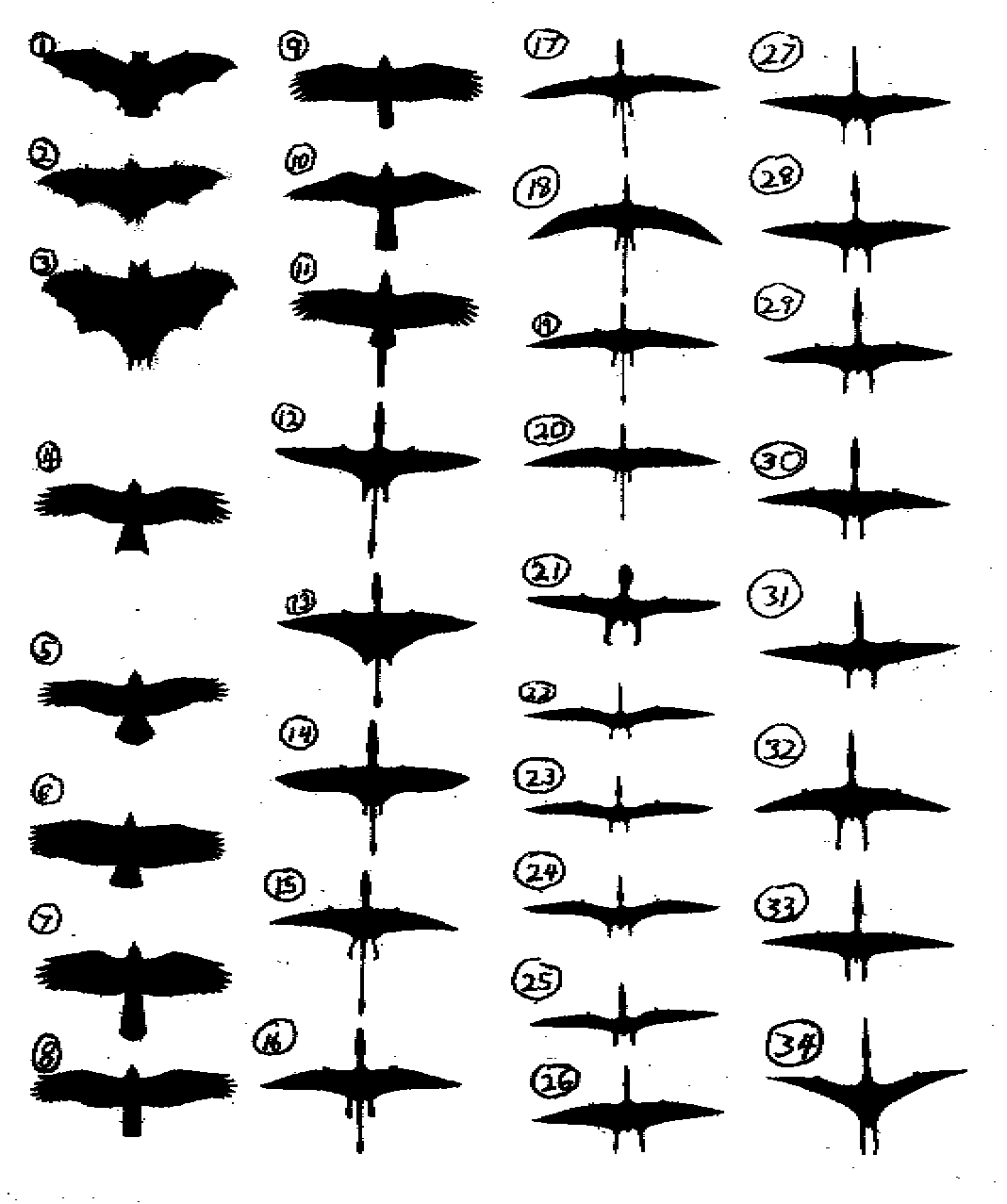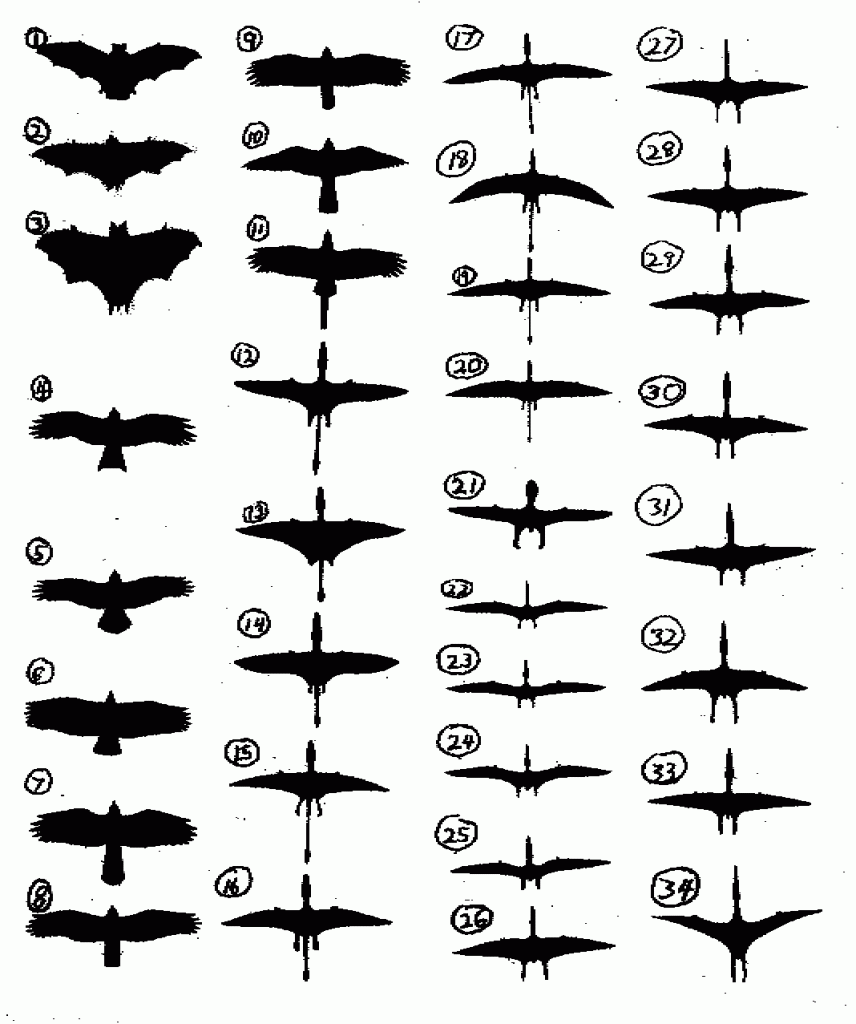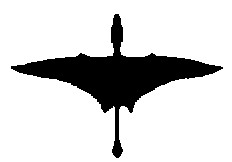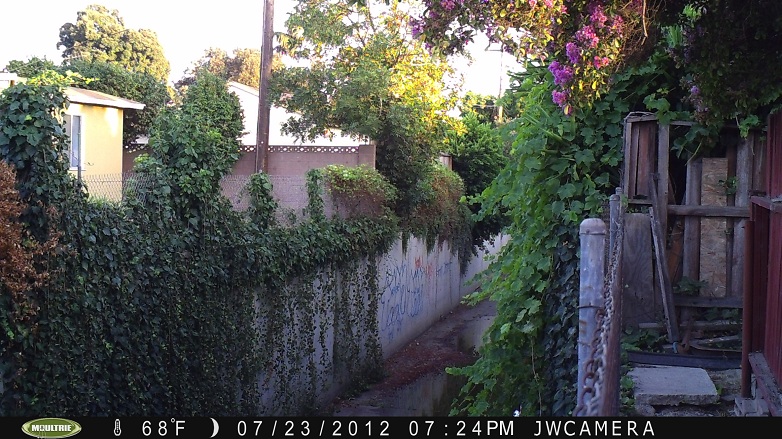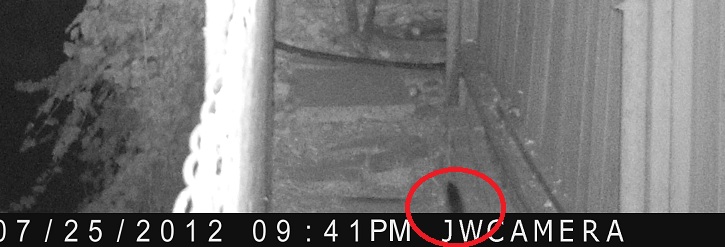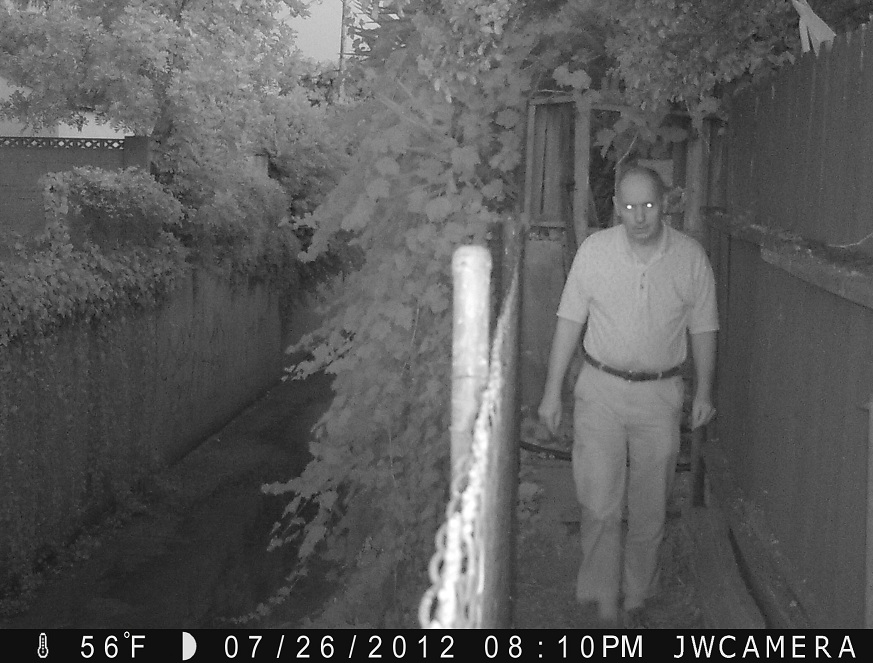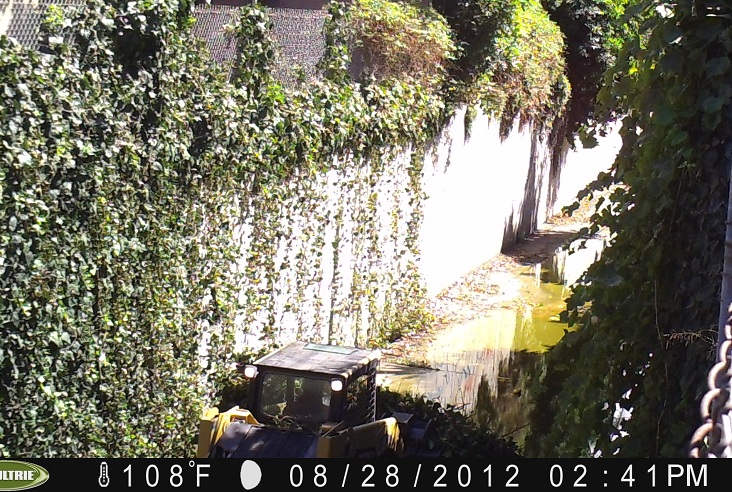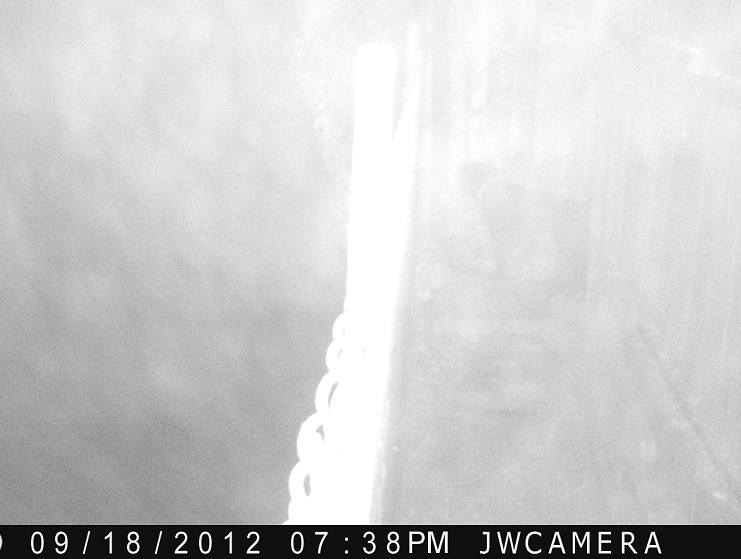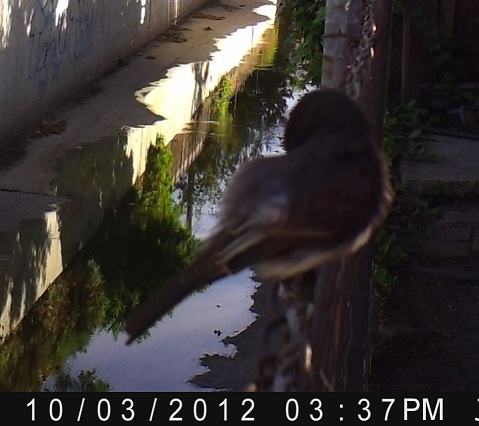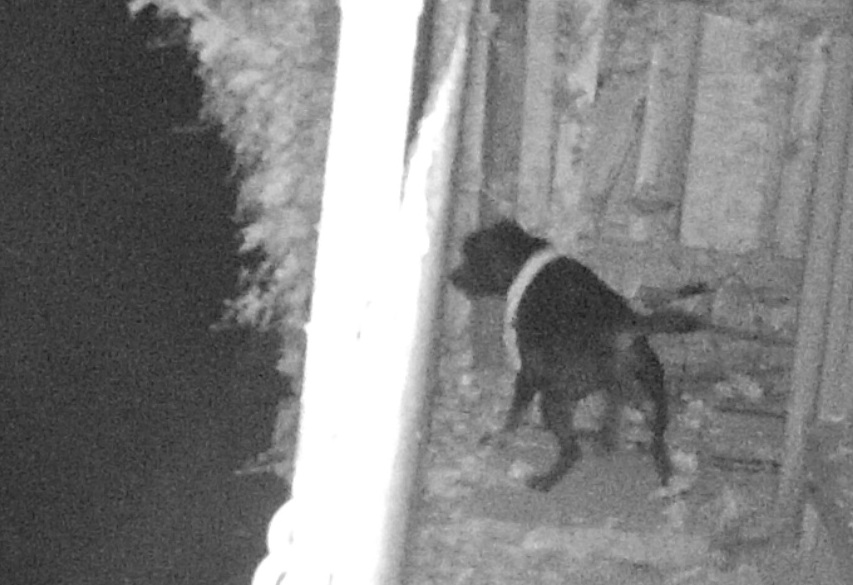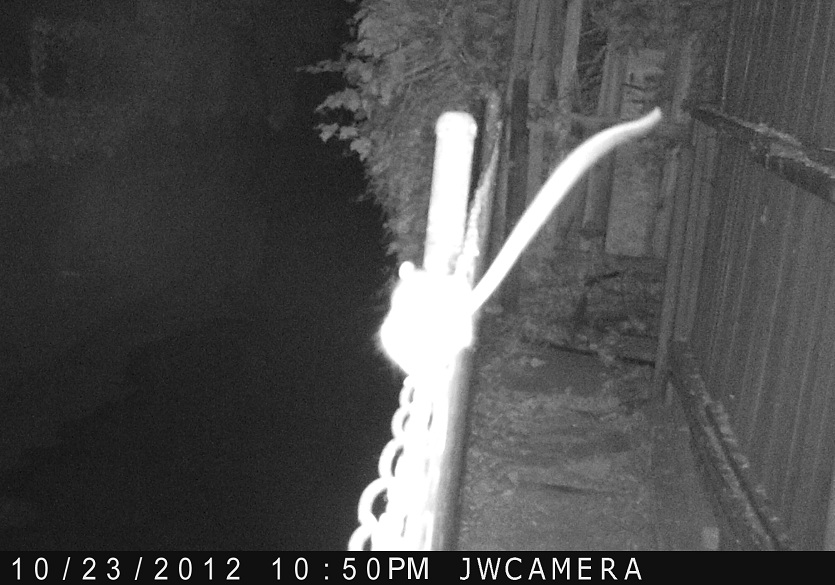The other day, somebody asked me, on Facebook, if I plan on returning to Papua New Guinea. (Many of my friends know of my ropen expedition in 2004.) I have no plans for visiting that far-away country for a simple reason: sightings are reported within fifty miles of my home in Southern California, even a sighting in my own city of Long Beach.
I recently received indications that a home owner (a location secret for now) will allow me to place security video cameras in a backyard, over a storm channel where a ropen seems to occasionally visit. This potential 24/7 surveillance will be better than the system I have been using in a backyard in Lakewood, California. In contrast to that slow-response game camera, the security video cameras can catch and record movement immediately, rather than only after a couple of seconds.
Lakewood, California, Investigation
It’s no secret that I have been monitoring a backyard in Lakewood, for the past two months. But the game camera has a slow trigger: It begins recording about two seconds after the triggering event. That’s great for photographing a deer that walks in front of a camera in a forest, but not great for photographing a storm channel that a ropen has just flown through and out of.
Nevertheless, I continue to hope that the ropen that was seen by an eyewitness this past June will, on some day or some night, stop at the fence where we believe it sometimes enters a neighbors overgrown backyard. It might stay long enough for the game camera to capture its image.
Storm Channel Conjecture
I don’t recall any eyewitness ever reporting anything like a pterosaur flying through a storm channel; nevertheless circumstances suggest at least one or two or three or more have done so in Southern California. Too many sightings have been close to drainage canals, especially the June, 2012, sighting in Lakewood. The lady saw the “pterodactyl” or “dragon” as it was sitting on a phone line almost directly over the storm channel at the back of her backyard.
Many more Southern California sightings could be mentioned, for many of them were close to storm channels. Why would nocturnal ropens not use those fly-through freeways at night? Look at it from another perspective: We would we have hundreds of eyewitnesses reporting sightings in the Los Angeles area (instead of just a few), if such creatures regularly flew overhead. Even at night, in Los Angeles County there are too many millions of people who could be observing flying pterosaurs, if those creatures did not use those storm channels to fly and search for rats and other yummy food.
Of course it’s possible that very few of those flying creatures live in Los Angeles County. Am I stretching this too far? Nobody has reported to me that a ropen flies through a storm channel in Southern California, but I believe that’s what ropens do at night? I understand that it appears too speculative, but think about this: How many mountain lions live in areas of Southern California near where people live but almost nobody ever sees a mountain lion! Some creatures keep away from people.
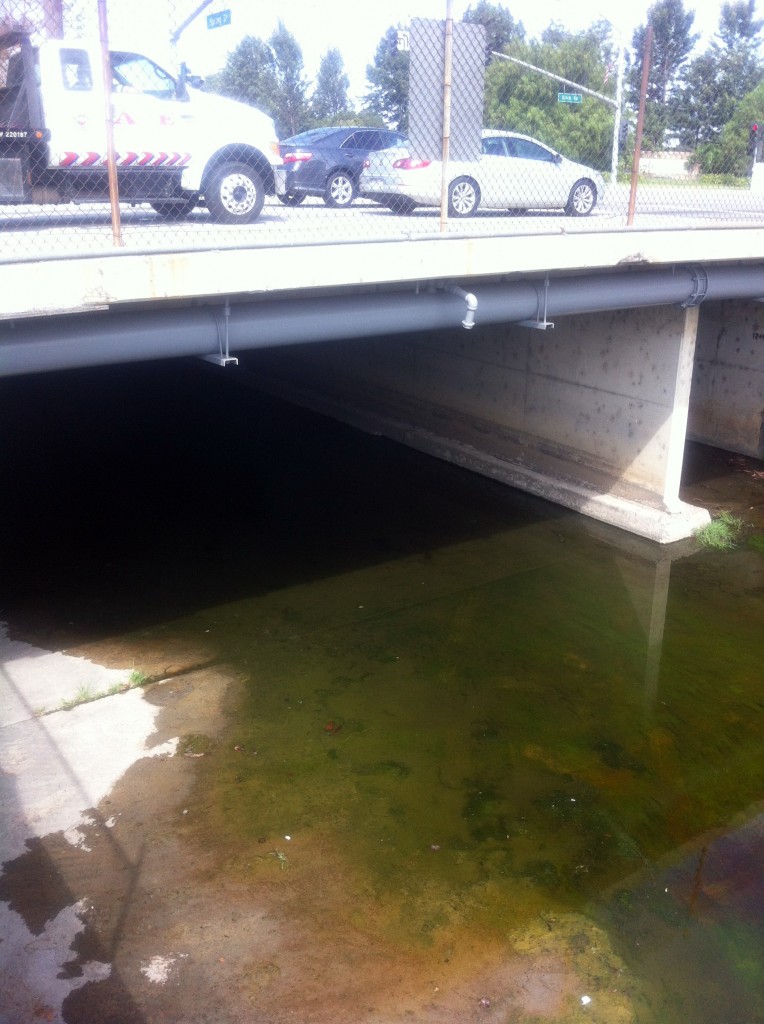
.
Sighting Near the Traffic Circle in Long Beach
At the intersection of Pacific Coast Highway and Lakewood Boulevard, in Long Beach, we encounter the Traffic Circle, more frightening to some drivers than a large ropen:
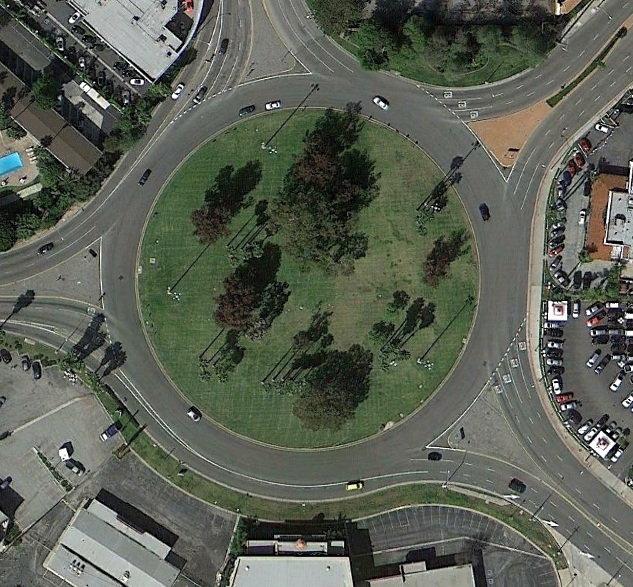
Actually, traffic circles are not dangerous to those who have driven in Europe, where they are common. Drivers entering the circle give right-of-way to cars already in the circle; blend into the traffic as you enter the circle, and do not stop if you can safely slow down a bit instead. Sometimes incoming traffic need hardly slow down at all, but keep alert. The main danger in Long Beach is probably when a driver with no traffic-circle experience comes upon it unawares and slams on the brakes or slams into a car already in the circle.
How does that relate to flying pterosaurs? Its in the location of this particular traffic circle.
After interviewing the Lakewood eyewitness earlier this year and placing a game camera in her backyard, I longed for another eyewitness to come forward in this part of Southern California. I prayed that somebody would contact me, with a sighting that would confirm that a ropen might fly through one or more storm channels in or near my home city of Long Beach. That prayer was answered in a way I found interesting.
I felt impressed to look again at the storm channels that wind through parts of Long Beach. On Google Map, I followed (going upstream) the channel that cut through the university. It went further than I had realized, appearing to begin close to the Traffic Circle. Then I remembered a sighting report that I had received years earlier.
When the lady contacted me, I struggled with what appeared almost unbelievable. She told me she had seen a pterodactyl near the Traffic Circle, not just any traffic circle: the one in Long Beach. I had traveled half way around the world to search for ropens on a remote tropical island, and now some lady tells me that a “pterodactyl” was flying in my own home town. I’m sure I responded with kindness (it was years ago; I recall little), but I secretly considered the possibility that the lady had some kind of problem.
Now I see. Over the past eight years, I have received a number of sighting reports from various parts of Southern California: perhaps twelve. I have also learned of other sightings and possibly-related circumstances and observances in others areas of California and in other states in the western United States. It was just a matter of time before I received one or two reports close to my home. I no longer have a problem with it. A sighting close to my home is blended into other reports from Southern California. There is no violent collision with common sense.
What is a ropen?
In my book Searching for Ropens, I gave an arbitrary definition of the creature: “any featherless creature that flies in the Southwest Pacific, and has a tail-length more than 25% of its wingspan.” That definition is used on Wikipedia, sounding almost like a scientific definition, but I meant for it to be just a general clue about the nature of the general kind of animal.
Horizontal Tail Vane
An eyewitness recently made it clear that the flying creature [an apparent ropen or Rhamphorhynchoid pterosaur] she had recently observed had a long tail and a horizontal tail vane at tail’s end. I have interviewed this lady several times, face-to-face, during the past two weeks. She appears highly credible.



